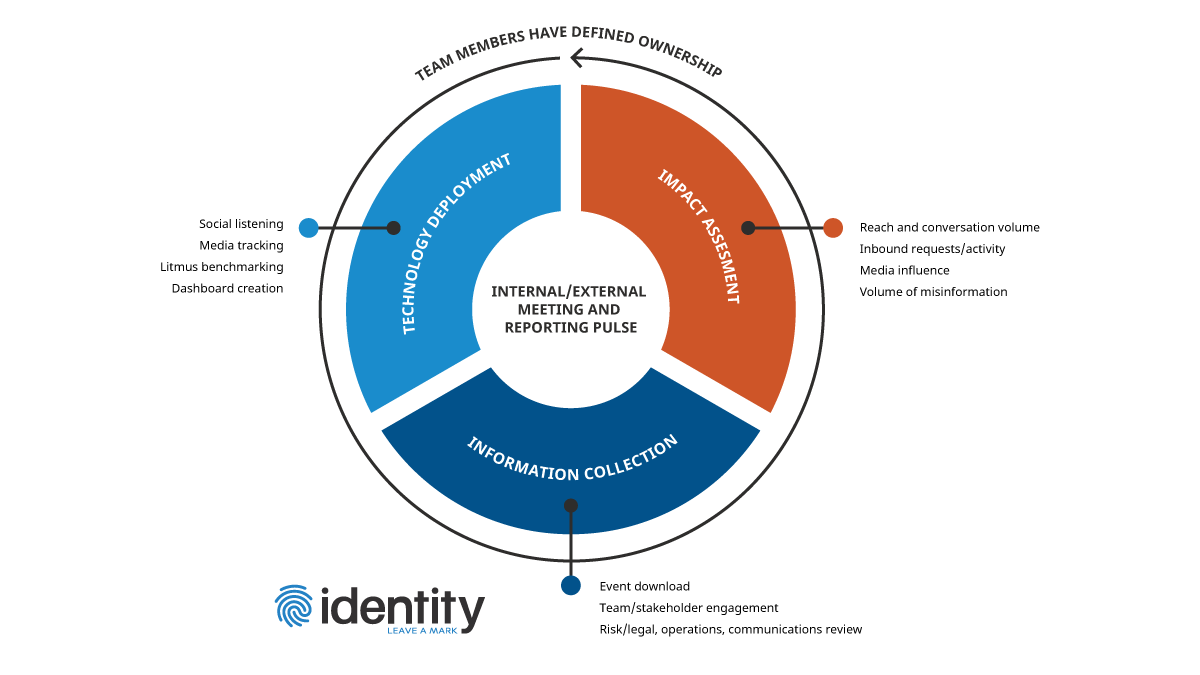
3 Critical Steps for Creating a Crisis Management Strategy
By: Alexia Garcia
In today’s digital world, a simple click of a button can quickly turn a small situation into a major crisis. However, the actions taken within the first 24 hours of a crisis can have a significant impact on how the situation will progress over time.
This was exactly the topic discussed in The First 24: Navigating the Initial Moments of Brand Crisis, a webcast presented by our partners at NetBase Quid and PRWeek. Brandon Chesnutt, partner and vice president of digital strategy & development, joined Mike Baglietto, global head of product marketing at NetBase Quid, to provide valuable insight on how immediate reactions and thoughtful responses can mitigate a PR crisis.
Identity’s team has experiencing managing crises of all types, and Brandon shared some of this insight during the webcast. For those who are newer to crisis communications management (like me, Identity’s newest intern), there were three important steps organizations should consider with regard to planning and navigating crisis situations.
Establish a Crisis SOP
A crisis standard operating procedure, or CSOP, can help a communications team quickly identify what actions need to be made, streamlining the overall process. The right standards can play a crucial role in having the ability to navigate, diagnose and respond to the situation in a timely manner.
The CSOP should address critical non-negotiables of an issue—such as technology development, information collection and impact assessment—in its early hours. Having a plan like this in place will help any brand, big or small, be prepared when something unexpected occurs, and when you work with an experienced agency like Identity, they can help create a strategy for exactly this type of situation.
Here’s what Brandon shared during the webcast to help illustrate what goes into a CSOP:

Track Media Analytics
In the initial moments of a crisis, media analytics have an important seat at the table. The media has the great ability of impacting how a crisis is viewed by the public, whether it’s a local community or a global stage. By tracking media analytics such as influence, amplification and reaction, teams can better understand how a crisis is playing out in real time. The data collected can also help the team create an effective response framework.
Communicate the Insights
How information is shared during the first hours of a crisis is just as important as how its collected. In an effective crisis management strategy, the communications team must share important information with stakeholders on a regular basis. Establishing set meeting pulses to deliver these insights and share how the narrative has changed can set you up for success in the long term.
Watch the Webcast
As a young professional new to the public relations world, I gained so many useful insights that will help me better prepare for any inevitable, unavoidable and unpredictable event that is sure to come my way. I know others will too.
Check out the full replay of The First 24: Navigating the Initial Moments of Brand Crisis webcast here:
If you’re a brand who needs to implement a CSOP or prepare for the future, Identity can work with you to identify the right plan and establish the right process for your needs, no matter what they might be.



